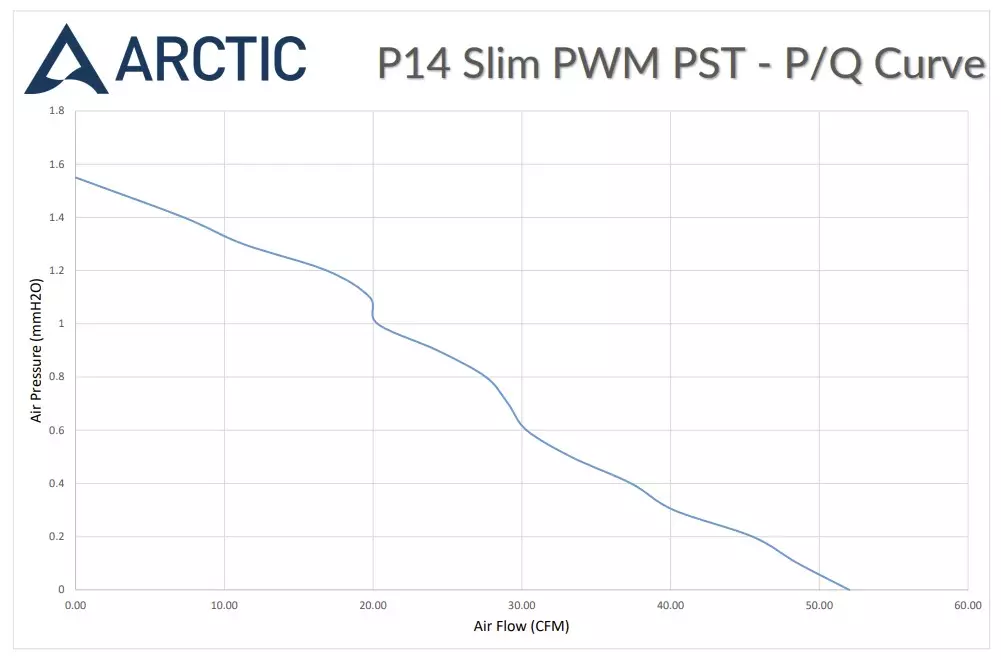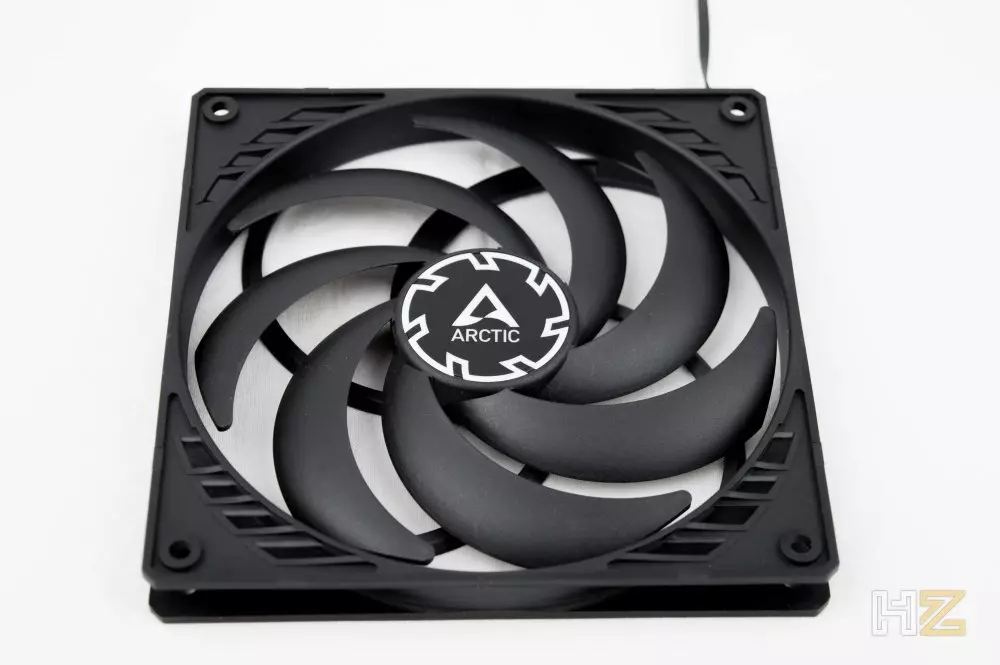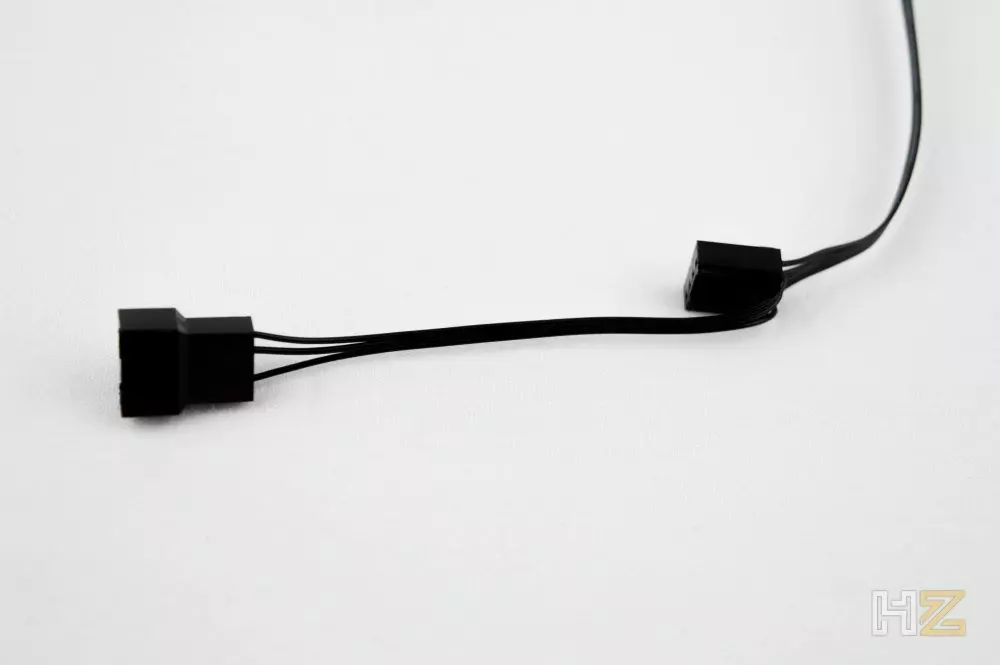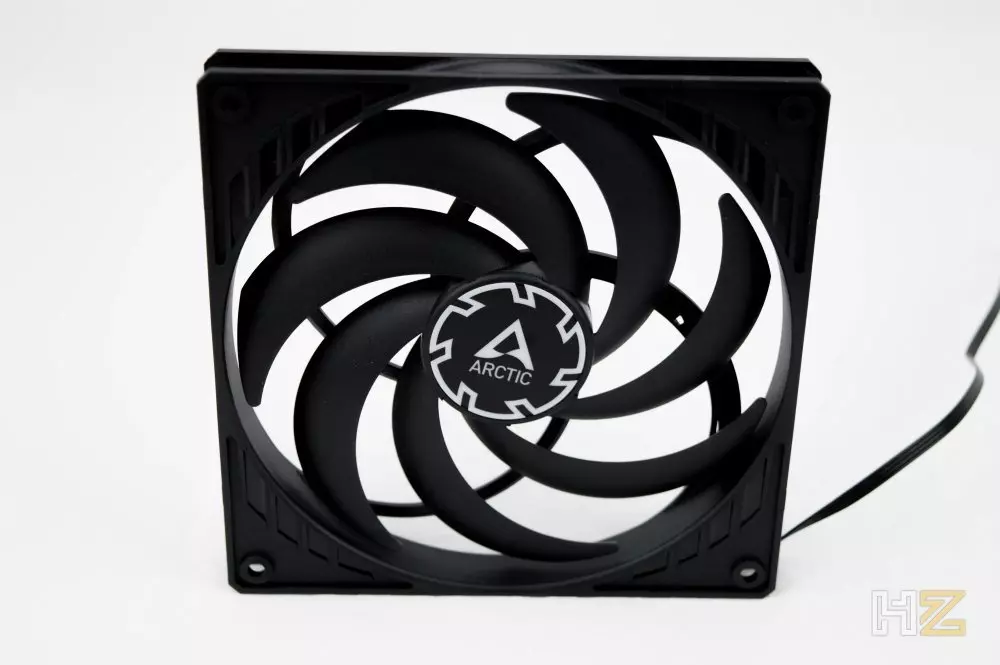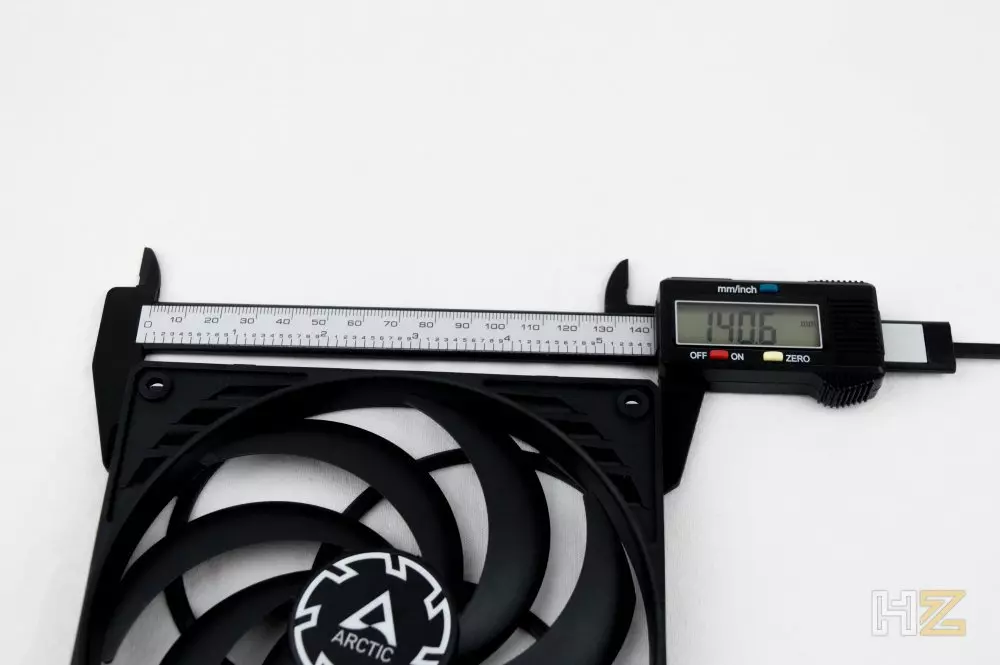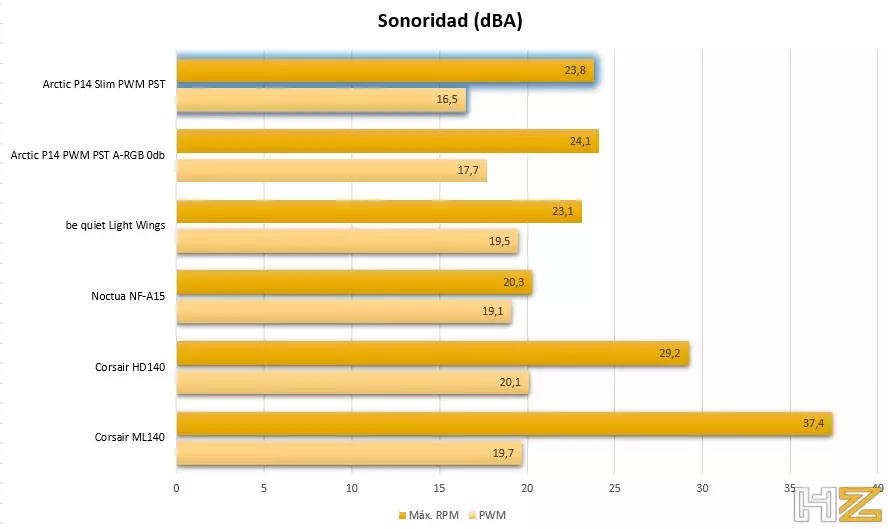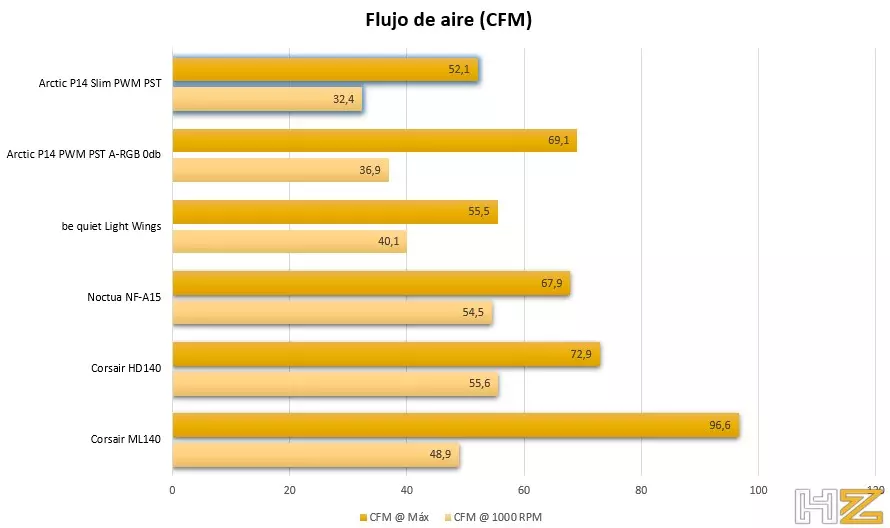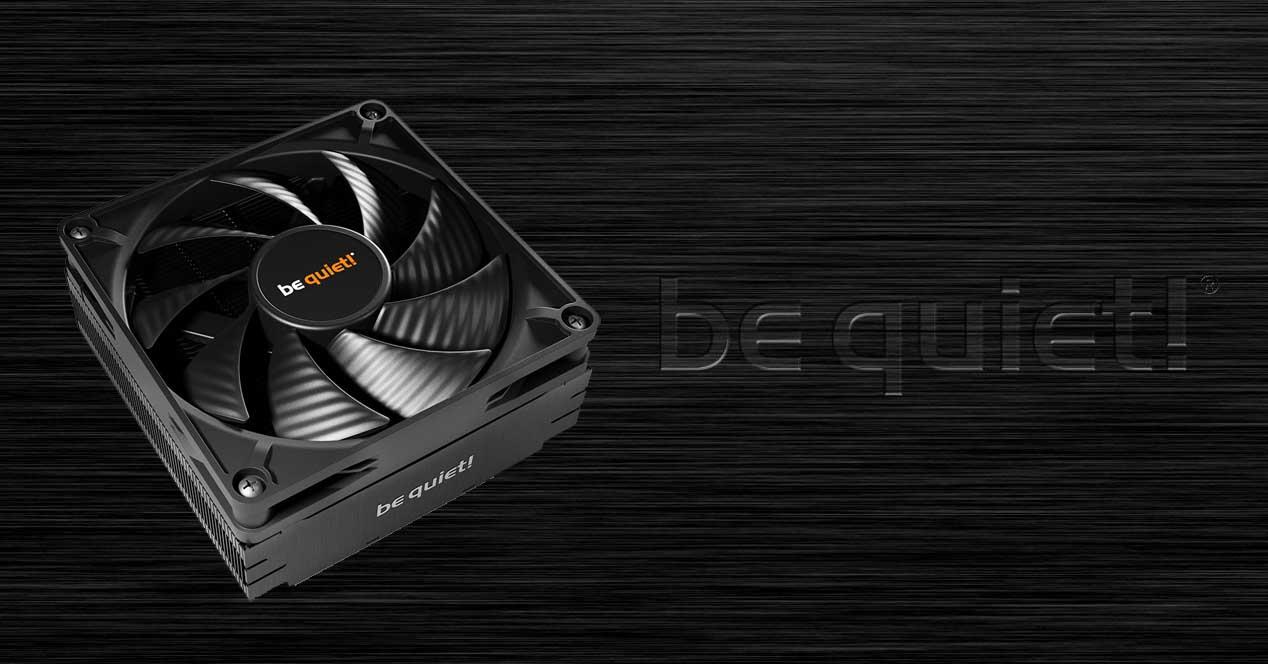
According to the manufacturer, this fan is optimized to provide high static pressure, and although it is true that the value we see in the specifications is not particularly high, it is for a fan in slim format, since this value it is in line with other “normal” fans.
Finally, it should be noted that we are dealing with a PWM model whose speed is controlled automatically, but which can rotate at up to 1,800 RPM, emitting only 24.5 dBA of noise and moving an air flow of 52 CFM. In addition, this fan has hybrid operation since it is capable of stopping completely when the PWM voltage that reaches it is less than 5%.
By the way, unlike many other fans, this Arctic P14 Slim PWM PST is capable of operating at only 4V, one volt less than normal.
Unboxing and external analysis
For this analysis, the manufacturer has sent us a single fan, but remember that it is also sold in packs of 3 units. The unit is packed in a soft cardboard box on whose main face we can see an image of the device, leaving its technical specifications for the back. As usual in Arctic, some QR codes on the packaging invite us to access the instruction manual and the product page, as well as the Arctic technical support site.
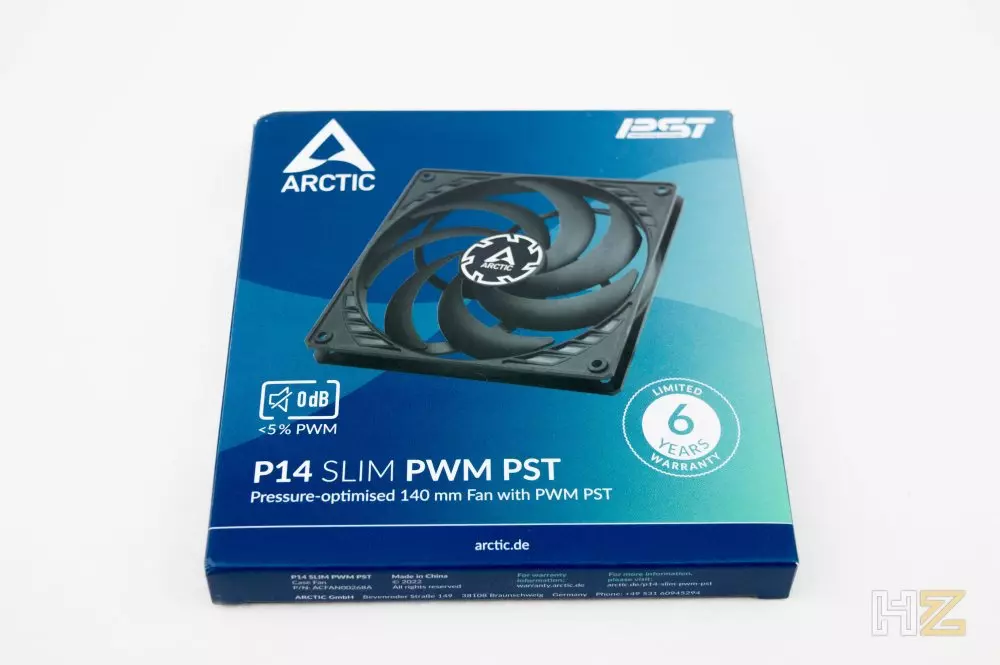

As accessories, this fan only comes with two sets of screws, some short and some long, allowing us to install it both in boxes and in radiators easily. The long screws thing is very interesting, because although radiators generally have screws, these are for 25-27 mm fans and not 16 mm thick, so these included by Arctic are “custom”, a little more short.
Here we have the Arctic P14 Slim PWM PST out of the box. As you can see, it does not have rubber inserts in the corners to reduce vibrations.
The cable is not shielded at all, and terminates in a 4-pin PWM connector. As it is an Arctic PST series fan, it also has a female connector so you can connect multiple fans in series.
This Arctic P14 Slim PWM PST is designed with a total of 7 blades, quite narrow and with a lot of angle to generate good static pressure.
At the rear, we can see that the engine is supported by four plastic mounts. In the center, Arctic shows us the model and its logo, accompanied by electrical data: in this case, 12V and 0.19A, which gives us a consumption of 2.28 watts.
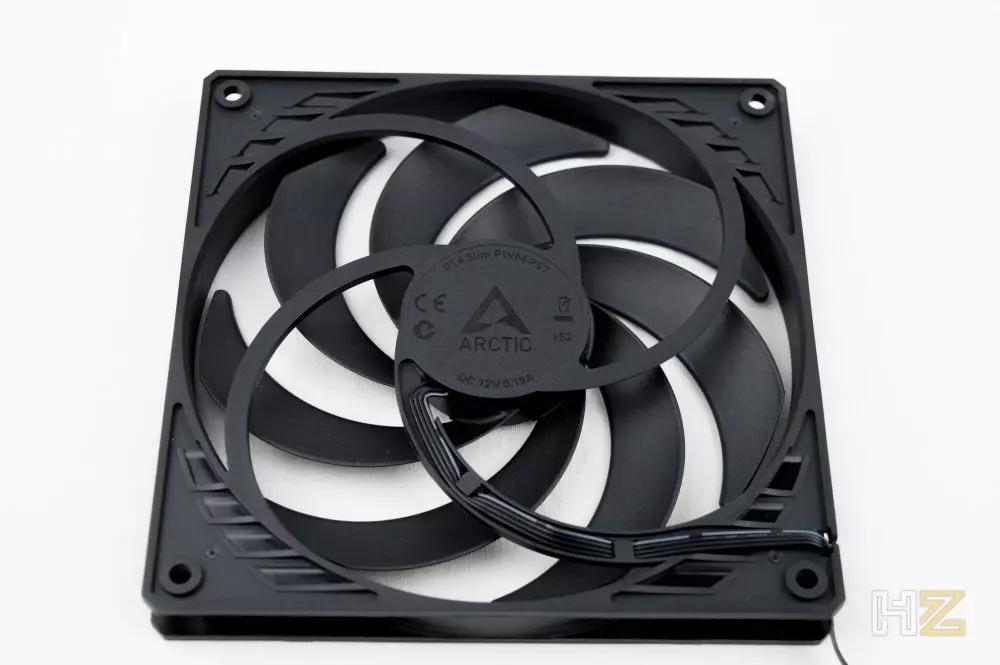
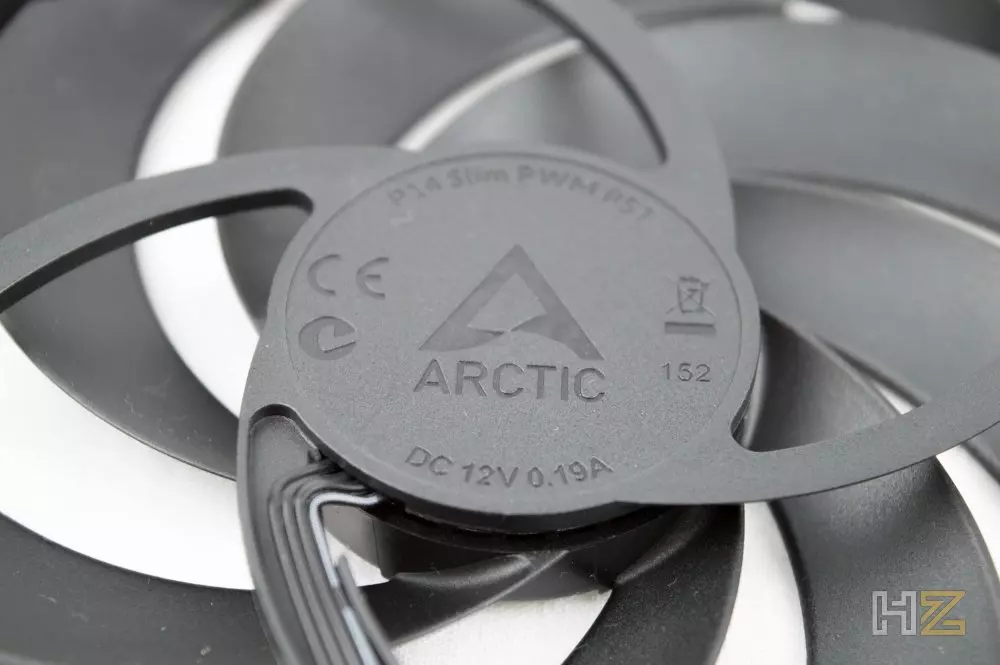
The fan is really very narrow, and that is to say that it measures 16 mm it may tell us nothing but it is really between 0.9 and 1.1 centimeters narrower than the usual fans.
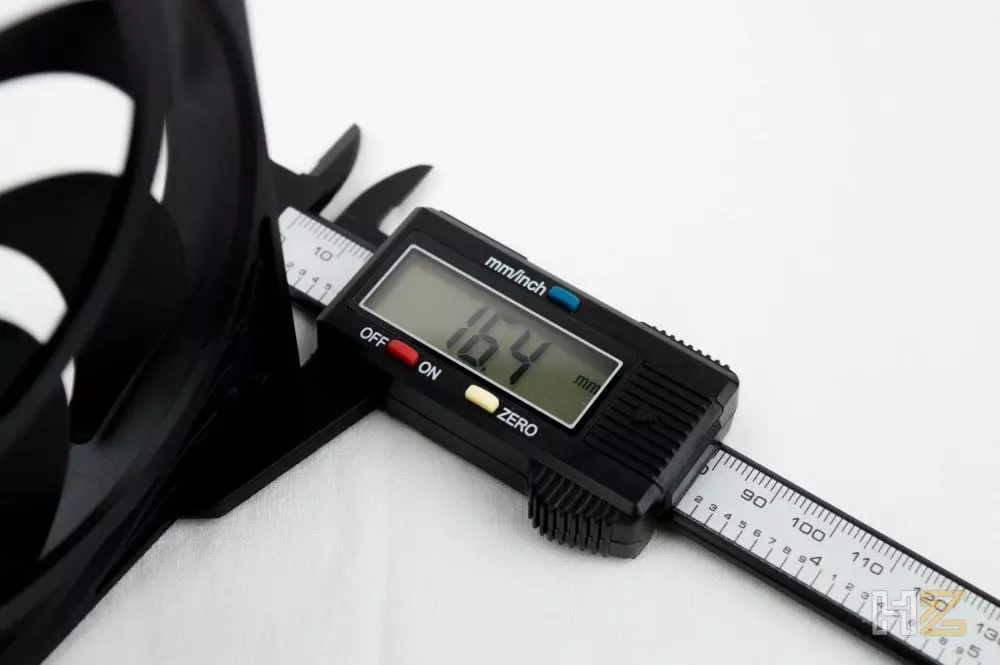
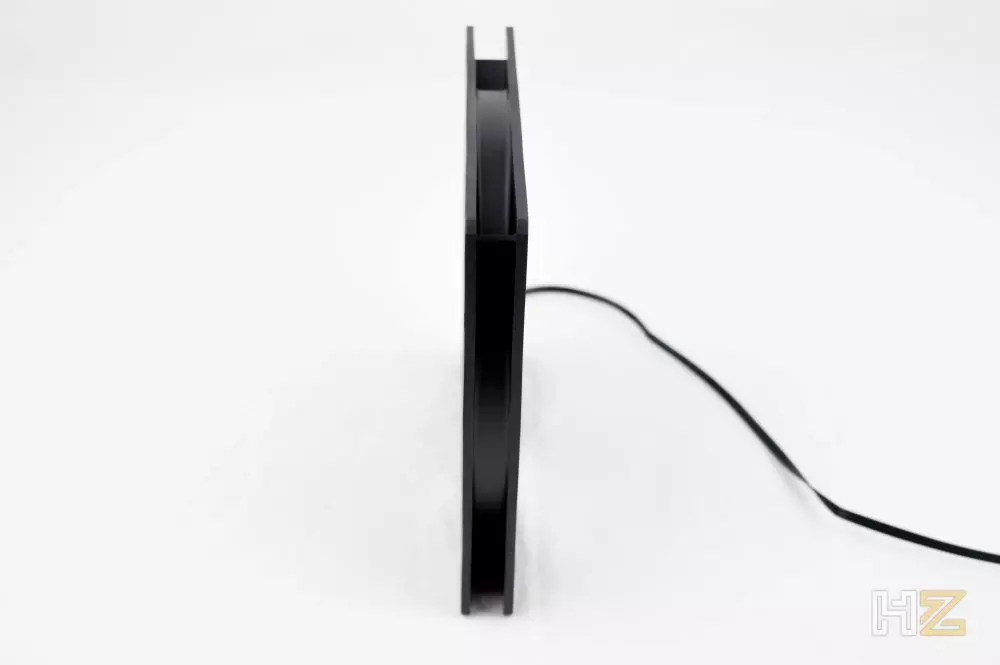
Of course and as we said at the beginning, we are facing a 140 mm model.
Having seen the fan, we are going to proceed to put it to the test.
This is how the Arctic P14 Slim PWM PST works
As always when we review fans, we proceed to test them in the air to measure their efficiency without the restrictions that you would have with a case grill or a heatsink. In addition, in this way we can compare its performance with that of other fans that have passed through our laboratory.
We start with the loudness, an aspect that is going to be interesting since slim format fans are usually relatively noisy. To measure the noise, we have used a Protmex PPM-SM001 sound level meter at a distance of exactly 50 centimeters from the fan, so that the decibels measured are dBA. We have made two measurements as always: one with the speed in PWM so that it works automatically, and another at its maximum speed. This is the result:
According to what Arctic said in the technical specifications, this fan emits at most 0.3 sone, which corresponds to 24.5 dBA of noise, and it is almost the measurement obtained, which has remained at 23.8 dBA at maximum speed. With the fan in PWM mode, it’s virtually inaudible at just 16.5 dBA, which is basically the ambient noise we get in the lab.
To give you an idea of what this means, in the following table you can find examples of noise values in dBA.
| sound source | dB | Effect |
|---|---|---|
| Airplane taking off at 25 meters | 150 | eardrums rupture |
| take-off runway of an airport | 140 | Pain threshold |
| Takeoff of a military fighter at 20 meters | 130 | Pain. It is 32 times more intensity than 70 dBA. |
| Horn of a truck at 1 meter. Live concert. | 110 | Average of human pain. 16 times more intensity than 70 dBA. |
| Electric lawn mower. Helicopter at 30 meters. | 100 | Eight times more intensity than 70 dBA. Maintaining this level for 8 hours causes damage to the eardrums. |
| Motorcycle at 10 meters | 90 | 4 times more intensity than 70 dBA. It can damage the eardrums if it is exposed for more than 8 hours. |
| Dishwasher. Factory (average). | 80 | Twice the intensity of 70 dBA. Threshold of what is usually annoying. |
| TV Audio | 70 | From this intensity, it is already annoying for many people. |
| Conversation in a restaurant | 60 | Half the intensity of 70 dBA. |
| Normal conversation in a house. | fifty | Four times less intense than 70 dBA. |
| Library | 40 | One eighth of the intensity of 70 dBA. |
| Rural zone | 30 | Sixteen times less intense than 70 dBA. |
| Whisper | twenty | Barely audible if you’re not too close. |
| Breathing | 10 | Inaudible to most. The human being normally does not usually listen to his own breathing. |
| absolute silence | 0 | It is literally impossible for a human being to “hear” absolute silence, but this is the threshold of hearing. |
Let’s go now with the air flow, surely the weak point of slim fans because physics is physics, and having a smaller surface to push air on the blades, it moves much less flow than normal fans. To measure this we have used a Holdpeak HP-866A anemometer, and again we have made two measurements: one at 1,000 RPM and another at maximum.
As expected, the result has been lower than that obtained with “full size” fans, but still very good data and more if we take into account its static pressure of 1.55 mm / H2O, so it will be quite good. even installed behind a grille.
Conclusion and verdict
As usual, Arctic has done an excellent job with this Slim version of their P14 PWM PST fans. They have managed to maintain a fairly decent performance but reduce the thickness of the fan to almost half, which will allow us to use them in situations where a normal fan will not fit.
In addition, with a price of just 12 Euros per unit, these fans are quite cheap and, without a doubt, an excellent option for those who are looking for a slim fan with good performance, quietness, and that is not too expensive.
For all these reasons, we believe that these fans deserve our Gold award, as well as our recommendation for their great performance / price ratio.


